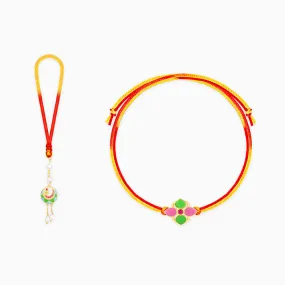Musa Nono, commonly known as the Lady Finger Banana, is a small and delicate variety of bananas that are native to Southeast Asia. It is a popular choice among banana enthusiasts due to its sweet flavour and unique shape. Here is a detailed description and comprehensive care guide to help you grow and care for your Musa Nono plant.
Description:
The Musa Nono is a dwarf banana plant that typically grows up to 5 to 8 feet tall, making it suitable for both indoor and outdoor cultivation. It features long, slender, and slightly curved bright green leaves that create an attractive tropical appearance. The fruit of the Musa Nono is small and elongated, resembling the shape of a lady's finger, hence the name. It starts as green and gradually ripens to a bright yellow colour with a sweet taste and creamy texture.
Light:
Musa Nono plants thrive in bright, indirect sunlight. It is essential to provide them with at least 6 to 8 hours of sunlight each day. However, they are sensitive to intense direct sunlight, so it is advisable to provide them with some shade during the hottest parts of the day, especially if grown outdoors.
Temperature:
These banana plants prefer warm and tropical climates. The ideal temperature range for Musa Nono is between 75¬?F to 85¬?F (24¬?C to 29¬?C) during the day and around 60¬?F to 70¬?F (15¬?C to 21¬?C) at night. They are not tolerant of cold temperatures and should be protected from frost or freezing conditions.
Watering:
Musa Nono plants require regular watering to keep the soil consistently moist but not soggy. Water the plant thoroughly whenever the top inch of soil feels dry. It is important to ensure proper drainage to prevent the roots from becoming waterlogged. Overwatering can lead to root rot, so it is crucial to strike a balance and avoid letting the plant sit in standing water.
Humidity:
These banana plants thrive in high humidity environments. If you are growing them indoors, misting the leaves regularly or placing a humidifier nearby can help create the desired humidity levels. Outdoor plants generally benefit from the natural humidity found in tropical regions.
Soil:
Musa Nono plants prefer well-draining, rich, and loamy soil. A mixture of peat moss, perlite, and organic compost provides a suitable growing medium. The soil pH should be slightly acidic to neutral, ranging from 5.5 to 7.0.
Fertilizer:
Regular feeding is important for the healthy growth of Musa Nono plants. Use a balanced, slow-release fertilizer or a water-soluble fertilizer specifically formulated for bananas. Apply the fertilizer every two to three months during the growing season, following the manufacturer's instructions. Avoid over-fertilization, as it can damage the plant.
Pruning:
Pruning is not necessary for Musa Nono plants unless you want to control their size or remove dead or damaged leaves. If you wish to limit the height, you can cut back the top of the plant, which will encourage the growth of new shoots from the base.
Pests and Diseases:
Musa Nono plants are generally resistant to pests and diseases. However, they can occasionally be affected by aphids, spider mites, and mealybugs. Regularly inspect the plant for any signs of infestation, and if detected, treat them with appropriate insecticides or natural remedies like neem oil or insecticidal soap.
Propagation:
The most common method of propagation for Musa Nono plants is through the division of suckers or pups that grow at the base of the parent plant. Carefully separate the pup from the main plant and plant it in a separate container or desired location. Ensure that the pup has some roots attached for successful transplanting.
With proper care, Musa Nono plants can thrive and produce an abundance of delicious lady finger bananas. By providing them with the right conditions, regular maintenance, and attention to their needs, you can enjoy the beauty and taste of this tropical plant in your own home or garden.















